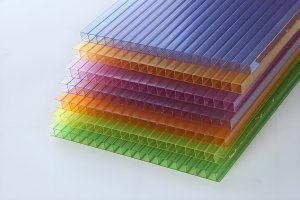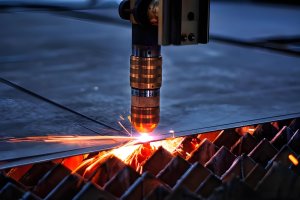In the world of CNC machining, selecting between copper and bronze is a pivotal decision that shapes a component’s performance, manufacturability, and cost. As an engineer who’s spent years navigating material choices for precision parts, I’ve seen firsthand how the copper vs. bronze debate can make or break a project. These “red metals” share a copper base but diverge sharply in properties and applications. Copper delivers unmatched electrical and thermal conductivity, while bronze alloys excel in strength, hardness, and wear resistance. This article offers a data-driven copper vs. bronze comparison, enriched with my insights from the shop floor, to guide engineers through material selection for CNC machining.
Fundamental Material Science: Copper vs. Bronze
The copper vs. bronze choice starts with understanding their metallurgical roots, a lesson I learned early in my career when a misjudged material choice led to costly rework.
Pure Copper: The Conductivity King
Copper, a pure elemental metal (Cu, atomic number 29), sets the benchmark for conductivity in CNC machining. Its key grades include:
- C110 (Electrolytic Tough Pitch): ~99.90% pure with trace oxygen, offering 100% IACS conductivity. Its slight oxygen content aids CNC machining but risks hydrogen embrittlement during heating.
- C101 (Oxygen-Free Copper): ≥99.99% pure, delivering 101% IACS conductivity and immunity to embrittlement, perfect for high-temperature applications like welding.
Copper’s high ductility and corrosion resistance make it ideal for electrical components, but its softness challenges CNC machining precision, a point I’ll revisit in the machinability section.
Bronze: The Strength-Engineered Alloy
Bronze, a family of copper-based alloys often alloyed with tin, is designed for mechanical robustness. A typical mix—88% copper, 12% tin—creates internal stresses that boost strength through solid solution strengthening. In my experience, selecting the right bronze alloy for CNC machining can transform a part’s durability. Common alloys include:
- Tin Bronzes (C90700): Balanced strength and wear resistance.
- Phosphor Bronzes (C51000): Enhanced hardness and fatigue resistance with phosphorus.
- Aluminum Bronzes (C95400): Steel-like strength and corrosion resistance via an aluminum oxide layer.
- Silicon Bronzes (C65500): High strength and corrosion resistance.
- Leaded Tin Bronzes (C93200): Lead inclusions improve machinability for CNC machining.
In the copper vs. bronze comparison, bronze trades conductivity for mechanical prowess, making it a go-to for structural components.
Quantitative Comparison: Copper vs. Bronze Properties
To quantify the copper vs. bronze trade-offs, I’ve compiled key properties based on years of material testing in CNC machining projects.Table 1: Copper vs. Bronze – Property Comparison for CNC Machining
| Property | Pure Copper (C110) | Bronze (Typical Range) |
| Tensile Strength | 210 MPa | 350–635 MPa |
| Yield Strength | 33.3 MPa | 125–800 MPa |
| Brinell Hardness | 35 HB | 40–420 HB |
| Electrical Conductivity | 100% IACS | ~15% IACS |
| Thermal Conductivity | ~385 W/m-K | 60–90 W/m-K |
| Density | 8.93 g/cm³ | 7.4–8.9 g/cm³ |
This copper vs. bronze table underscores copper’s conductivity edge and bronze’s mechanical superiority, guiding material choices in CNC machining.
CNC Machinability: Copper vs. Bronze Challenges
Machinability is where copper vs. bronze differences shine in CNC machining. I recall a project where copper’s “gummy” nature nearly derailed a tight deadline, a lesson that informs my approach today.
Chip Formation Basics
In CNC machining, a cutting tool shears material to form chips. Short, brittle chips are ideal; long, stringy ones cause chaos. The copper vs. bronze machinability gap hinges on chip behavior.
Copper’s Machining Woes
Pure copper’s ductility creates stringy chips that tangle around tools, a phenomenon called “bird’s nesting.” Its high thermal conductivity pulls heat into the tool, causing built-up edge (BUE), where copper welds to the cutting edge. I once watched a CNC machining run grind to a halt as copper chips clogged a spindle, leading to hours of cleanup and tool replacement. This makes copper a tough contender in the copper vs. bronze machinability race.
Bronze’s Machining Edge
Bronze alloys, with elements like tin or lead, form brittle chips that break cleanly. Leaded bronzes like C93200, with soft lead inclusions, act as natural lubricants, easing CNC machining. Machinability ratings tell the story:
- Pure Copper (C110): ~20%
- Phosphor Bronze (C51000): ~20%
- Aluminum Bronze (C95400): ~60%
- Bearing Bronze (C93200): ~70%
- Leaded Copper (C14500): ~85%
In copper vs. bronze machining, bronze’s higher ratings translate to faster production and lower costs.
Optimized Machining Strategies
Table 2: CNC Machining Strategies for Copper vs. Bronze
| Parameter | Pure Copper (C101/C110) | Bearing/Leaded Bronze (C932) | Aluminum/Tough Bronze (C954) |
| Tooling Material | Polished Carbide, PCD | Standard Carbide, HSS | Coated Carbide (TiN, TiAlN) |
| Tool Geometry | Sharp edges, high rake | Standard, chip breakers | Robust, coated for wear |
| Cutting Speed (SFM) | 600–1500 | 100–300 (turning), 900+ (milling) | Low to moderate |
| Feed Rate | Moderate to high | Moderate, aggressive for free-machining | Consistent to avoid work hardening |
| Coolant | High-volume flood | Standard, oil-based optional | High-pressure coolant |
| Key Challenge | Chip control, BUE | Chip control, tool grabbing | Tool wear, work hardening |
These copper vs. bronze strategies, honed through trial and error, ensure high-quality parts in CNC machining.
Personal Insight: A Machining Mishap
Early in my career, I specified C110 copper for a high-current busbar, assuming its conductivity would outweigh machining challenges. The result? Stringy chips and BUE doubled our CNC machining time, inflating costs. Switching to C932 bronze for a similar project later slashed cycle times by 40%, reinforcing bronze’s edge in the copper vs. bronze machinability comparison
.Application-Driven Selection: Copper vs. Bronze
Choosing between copper vs. bronze in CNC machining depends on the part’s function and environment. I’ve learned that aligning material to application is non-negotiable.
Copper’s Conductivity Niche
Copper shines where conductivity is king:
- Busbars and Terminals: C110’s 100% IACS conductivity minimizes resistive losses.
- Heat Exchangers: C101’s ~385 W/m-K thermal conductivity excels in cooling systems, a lesson from a heat sink project that outperformed expectations.
Bronze’s Mechanical Might
Bronze is my choice for mechanical demands:
- Bearings and Bushings: C932’s lead content ensures self-lubrication and wear resistance.
- Marine Components: C954 aluminum bronze withstands saltwater corrosion, as I saw in a propeller shaft that outlasted competitors.
- Springs: C510 phosphor bronze offers fatigue resistance for electrical contacts.
- Non-Sparking Tools: C17200 beryllium copper’s hardness and non-sparking properties are critical for hazardous environments.
Table 3: Copper vs. Bronze Application Guide for CNC Machining
| Application | Primary Requirement | Recommended Material | Key Rationale |
| Electrical Busbar | Maximum Conductivity | Copper (C110) | 100% IACS conductivity for minimal loss. |
| Marine Propeller Shaft | Strength & Corrosion Resistance | Aluminum Bronze (C954) | Steel-like strength, protective alumina layer. |
| Industrial Bushing | Self-Lubrication & Wear Resistance | Bearing Bronze (C932) | Lead enhances machinability and anti-friction. |
| Electrical Spring Contact | Fatigue Resistance | Phosphor Bronze (C510) | High yield strength for repeated flexing. |
| Non-Sparking Wrench | Hardness & Non-Sparking | Beryllium Copper (C17200) | Heat-treatable, non-ferrous, non-sparking. |
| Heat Exchanger Tube | Thermal Conductivity | Copper (C101) | ~385 W/m-K for efficient heat transfer. |
This copper vs. bronze guide helps match materials to CNC machining needs.
Total Cost of Manufacturing: Copper vs. Bronze
In CNC machining, the copper vs. bronze cost analysis extends beyond raw material prices to include machinability’s impact on Total Cost of Manufacturing (TCM).
Material Cost Dynamics
Copper, a commodity, often costs more than standard bronze alloys ($10/kg vs. $8/kg for C932). Specialized bronzes like beryllium copper can be pricier. Market volatility, which I’ve tracked through platforms like want.net, complicates budgeting.
Machinability’s Cost Impact
Machinability drives TCM. Copper’s low 20% rating inflates cycle times and tool wear, while bronze’s 60–70% ratings streamline CNC machining. A project I oversaw saw C110 copper parts cost $120 each due to slow machining, while C932 bronze parts cost $60, proving bronze’s cost-effectiveness in the copper vs. bronze equation.
Cost Example
For a precision gear, C110 copper’s slow CNC machining (20% rating) doubled labor costs compared to C932 bronze (70% rating). Despite copper’s lower material cost, bronze saved 30% overall, a pattern I’ve seen repeatedly.
Advanced Topics in Copper vs. Bronze for CNC Machining
Microstructure Insights
The Cu-Sn phase diagram reveals why bronze excels in CNC machining. The soft α-phase and hard δ-phase (Cu₃₁Sn₈) enhance wear resistance, a key copper vs. bronze advantage for mechanical parts.
Welding Considerations
Copper’s thermal conductivity makes welding tricky, requiring high-energy processes. Bronze is more weldable, a factor I consider in designs needing post-machining assembly.
Safety: Beryllium Copper Risks
Beryllium copper (C17200) is a standout in the copper vs. bronze comparison but toxic. Dust inhalation risks Chronic Beryllium Disease, so I enforce strict protocols: ventilation, respirators, flood coolant, and hazardous waste disposal during CNC machining.
Future Trends: Copper vs. Bronze in CNC Machining
The copper vs. bronze choice is increasingly relevant as electrification (EVs, renewables) and data centers drive demand for precision parts. I’ve sourced materials through want.net, which offers real-time market insights, helping me stay ahead of price trends. This surge underscores the need for optimized CNC machining strategies.
Personal Reflection: Lessons from the Shop Floor
My first CNC machining project with copper was humbling. I underestimated its gummy nature, leading to scrapped parts and frustrated machinists. Switching to bronze for a bushing project was a revelation—faster cuts, cleaner finishes, and happier clients. The copper vs. bronze decision taught me to prioritize application needs and machinability over raw material cost, a principle I now share with junior engineers.
Conclusion: Copper vs. Bronze Decision Framework
The copper vs. bronze choice for CNC machining hinges on balancing conductivity against mechanical performance. Copper excels in electrical and thermal applications, while bronze dominates in strength and durability. My experience underscores the need to evaluate application requirements, environment, and TCM. For complex projects, I recommend consulting a CNC machining expert and leveraging resources like want.net for material sourcing insights. Optimize your copper vs. bronze selection to ensure performance and cost-efficiency in your next CNC machining project.
FAQ:
1. What are the main differences between copper and bronze in CNC machining?Answer: In the copper vs. bronze comparison for CNC machining, copper is a pure metal with exceptional electrical (100% IACS) and thermal conductivity (~385 W/m-K) but is soft and gummy, making it challenging to machine. Bronze, a copper-based alloy often with tin or other elements, offers higher strength (350–635 MPa vs. copper’s 210 MPa) and better machinability (up to 70% rating for C932 bronze vs. 20% for C110 copper). Copper suits electrical applications, while bronze excels in mechanical components like bearings and gears.
2. Why is copper harder to machine than bronze in CNC machining?Answer: Copper’s high ductility and thermal conductivity create long, stringy chips and built-up edge (BUE) during CNC machining, complicating chip control and accelerating tool wear. In contrast, bronze alloys, especially leaded ones like C932, form brittle chips and include lubricants, easing CNC machining. In my experience, machining copper busbars required frequent stops for chip removal, while bronze bushings cut smoothly, highlighting the copper vs. bronze machinability gap.
3. When should I choose copper over bronze for CNC machining?Answer: Choose copper for CNC machining when electrical or thermal conductivity is critical, such as in busbars (C110) or heat exchangers (C101). In the copper vs. bronze decision, copper’s 100–101% IACS conductivity outperforms bronze’s ~15% IACS. I once selected C101 copper for a heat sink, achieving superior thermal performance that bronze couldn’t match.
4. When is bronze a better choice than copper for CNC machining?Answer: Bronze is preferred in CNC machining for applications requiring strength, wear resistance, or corrosion resistance. For example, C932 bearing bronze is ideal for bushings due to its self-lubricating properties, and C954 aluminum bronze suits marine hardware for its durability. In the copper vs. bronze comparison, bronze’s mechanical properties make it versatile for structural parts, as I’ve seen in long-lasting propeller shafts.
5. How does machinability affect the cost of CNC machining copper vs. bronze?Answer: Machinability significantly impacts CNC machining costs in the copper vs. bronze comparison. Copper’s low 20% machinability rating increases cycle times and tool wear, raising costs. Bronze, with ratings up to 70% (e.g., C932), machines faster, reducing labor and tooling expenses. I’ve found that bronze parts can cost 30–40% less to machine than copper, despite similar material prices, due to shorter cycle times.
6. What bronze alloy is best for CNC machining?Answer: The best bronze alloy for CNC machining depends on the application. For general-purpose parts, C932 bearing bronze offers excellent machinability (70% rating) and self-lubrication. For high-strength needs, C954 aluminum bronze provides steel-like durability. In a copper vs. bronze project, I used C932 for bushings, achieving clean cuts and minimal tool wear, making it a shop favorite.
Reference:
https://www.differencebetween.com/difference-between-copper-and-vs-bronze/
https://redbcm.com/en/copper-vs-bronze/
https://en.wikipedia.org/wiki/Bronze
https://en.wikipedia.org/wiki/Copper
Other Articles You Might Enjoy
- Bronze vs. Copper: Which Offers Better Machinability and Durability?
Introduction to Bronze and Copper: Machinability and Durability Bronze and copper are two widely-known metals employed in various sectors, particularly in the manufacturing industry. The term 'Bronze' generally refers to…
- Graphite vs. Bronze in CNC Machining: Which Offers Better Precision and Durability?
Introduction: A Brief Explanation of CNC Machining and the Purpose of this Article CNC machining, standing for Computer Numerical Control machining, is a manufacturing process where pre-programmed computer software commands…
- Bronze vs. Aluminum in CNC Machining: Which Offers Better Precision?
Introduction to CNC Machining and Commonly Used Materials CNC machining is an indispensable part of modern manufacturing processes, being a widespread method by which digital design data directs the operation…
- Applications and Advantages of Bronze CNC Machining
1. Introduction: The Enduring Allure of Bronze in CNC Machining In this opening section, we explore the timeless appeal of bronze as a material for CNC machining. From its rich…
- Bronze Rivet Technology in CNC Machining
Bronze type that can process Rivet Phosphor Bronze Characteristics: High strength, excellent wear resistance, good elasticity. Applications: Springs, bearings, and parts requiring high wear resistance and elasticity. Tin Bronze Characteristics:…






